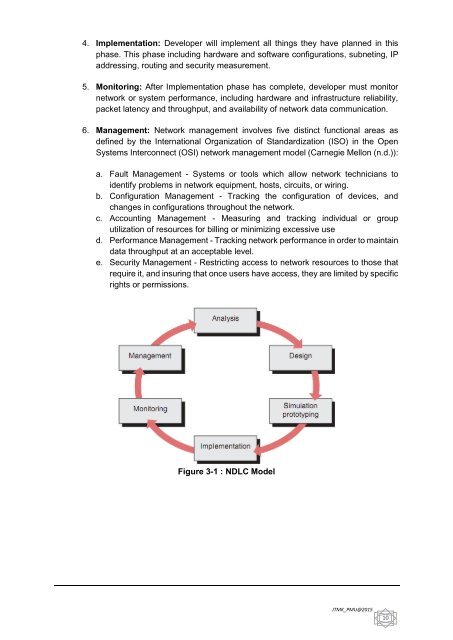E-BOOK FINAL YEAR RPOJECT
Create successful ePaper yourself
Turn your PDF publications into a flip-book with our unique Google optimized e-Paper software.
4. Implementation: Developer will implement all things they have planned in this<br />
phase. This phase including hardware and software configurations, subneting, IP<br />
addressing, routing and security measurement.<br />
5. Monitoring: After Implementation phase has complete, developer must monitor<br />
network or system performance, including hardware and infrastructure reliability,<br />
packet latency and throughput, and availability of network data communication.<br />
6. Management: Network management involves five distinct functional areas as<br />
defined by the International Organization of Standardization (ISO) in the Open<br />
Systems Interconnect (OSI) network management model (Carnegie Mellon (n.d.)):<br />
a. Fault Management - Systems or tools which allow network technicians to<br />
identify problems in network equipment, hosts, circuits, or wiring.<br />
b. Configuration Management - Tracking the configuration of devices, and<br />
changes in configurations throughout the network.<br />
c. Accounting Management - Measuring and tracking individual or group<br />
utilization of resources for billing or minimizing excessive use<br />
d. Performance Management - Tracking network performance in order to maintain<br />
data throughput at an acceptable level.<br />
e. Security Management - Restricting access to network resources to those that<br />
require it, and insuring that once users have access, they are limited by specific<br />
rights or permissions.<br />
Figure 3-1 : NDLC Model<br />
JTMK_PMU@2015<br />
10


